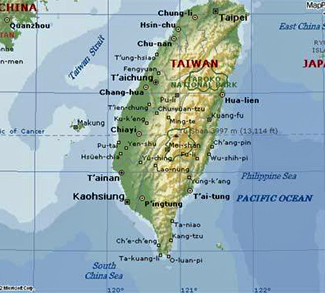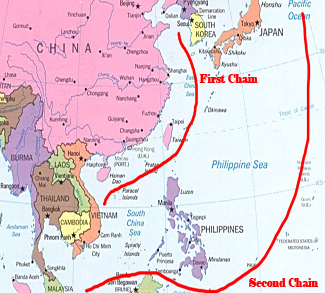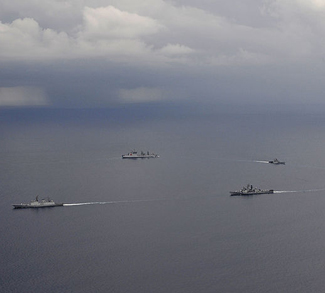Xi Jinping has often vowed to “reunify” China by capturing Taiwan. While Washington and Taipei speculate on when the invasion might come, many analysts believe that a blockade will be the strategy of choice if and when Beijing chooses to make a move on the island nation. In October, the People’s Liberation Army Navy (PLA Navy) appeared to be rehearsing for just this kind of scenario. Mid-month, it conducted the Joint Sword 2024B exercises, which People’s Daily described as “key-port blockade drills,” and the Global Times as a “stern warning to ‘Taiwan independence’ separatists.”
PLA Navy vessels and planes surrounded the island over the course of the exercises, targeting key Taiwanese ports and testing maritime and air defenses. Beijing routinely tries to intimidate Taiwan by violating its sea and airspace; however, this recent exercise set a record in terms of their scale, involving 125 aircraft and the Liaoning aircraft carrier. The drill also involved army, air force, and rocket force, branches of the PLA, which is typical for such exercises, but in a first, Joint Sword brought in the China Coast Guard as well, which has been deployed elsewhere in littoral waters to enforce sovereignty claims, notably in the South China Sea. Beijing’s deployment of the Coast Guard sends a not-so-subtle signal that Beijing views the waters around Taiwan as Chinese territory, thereby falling under operational domain of the China Coast Guard.
The latest Joint Sword exercises come one year after the Center for Strategic and International Studies China Power Conference predicted that a Chinese blockade, or “quarantine” of Taiwan, represents the most likely first phase of hostilities between Taipei and Beijing. Proponents of the blockade thesis argue that China has several options, including an invasion, which would be costly and could trigger a larger war with the United States, or a blockade, which would break Taiwan’s resistance and eventually force it into submission. There’s also the possibility of a combination of the two: a blockade to weaken Taiwan, followed by an invasion; or an invasion followed by a blockade. Incidentally, earlier this year, a trailer was released for the Taiwanese television drama called Zero Day, which depicts a PLA blockade of the island. Such a scenario was also envisioned by the Taiwanese government during its annual Han Kuang military exercises, which were expanded this year to involve not only the military but also emergency services and civilians.
The geopolitics of a Taiwan blockade
A PLA blockade would be economically devastating for Taiwan, which depends on the sea for international trade, accounting for about two-thirds of its GDP. Taiwan imports all of its energy and 70% of its food, meaning a blockade would only need to be 50% effective to result in severe energy and food shortages. Beijing is likely drawing lessons from the Ukraine war and concluding that Western support for an ally may wane over time. The natural conclusion is that in the early phase of a Taiwan conflict, although China would face sanctions and formal condemnations from the United Nations and the West, China’s much larger economy compared to Russia’s would allow it to endure sanctions for a more extended period. Additionally, with Taiwan being distant and less economically crucial to Europe than trade with China or Japan, Western governments might eventually accept the loss of Taiwan in exchange for lifting the blockade and reopening the Taiwan Strait to international shipping.




